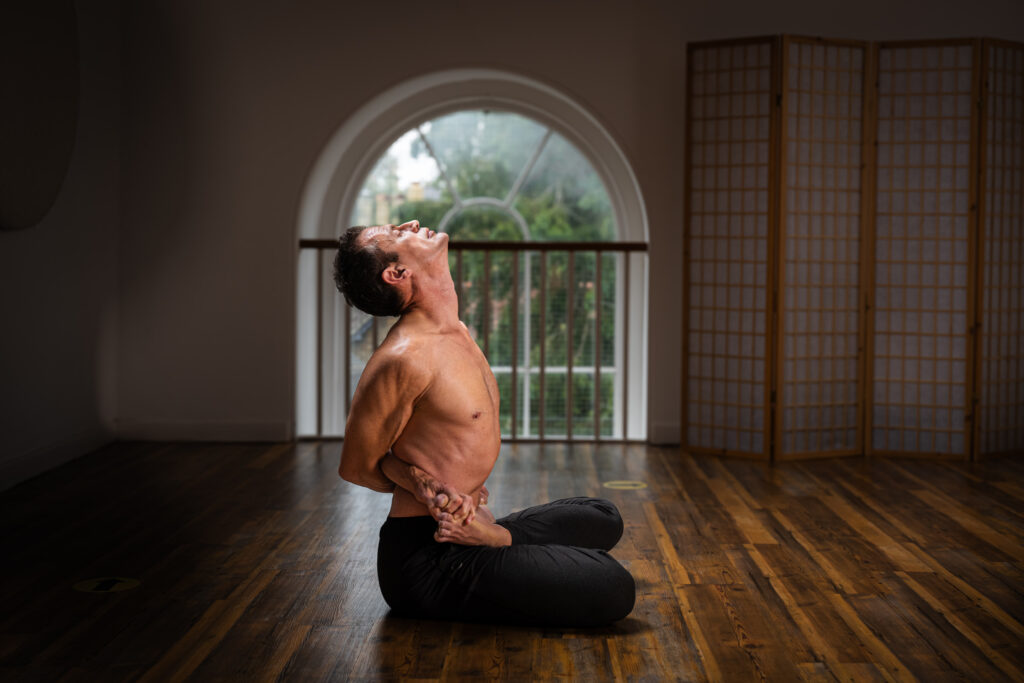Shadow Yoga is a school of Hatha Yoga established by Sundernāth (Shandor Remete), a lifelong student and initiate of the Nāth Sampradāya, and is co-founded by Emma Balnaves. This tradition of Hatha Yoga, shaped over centuries by master yogins beginning with the legendary Ādināth, and brought to fruition through Matsyendranāth and his student Gorakhnāth, offers a complete and profound path of self-cultivation.
The name Shadow Yoga is derived from the Chāyā Puruṣa — the yoga of the Shadow man — described in texts such as the Shiva Svarodaya and Shiva Saṁhitā. It refers to the web of patterns, tensions, and obstructions that obscure the natural intelligence of the life force. Shadow Yoga provides a methodical approach to dissolving these layers so that the light of one’s being can gradually emerge — bringing with it a renewed sense of vitality, rhythm, and inner clarity.
At the foundation of this method are preparatory movement forms known as Vyayāma (preludes). These are designed to awaken coordination between the limbs and breath, build strength and stamina, and help the practitioner attune to the innate rhythms of the body. They incorporate stances and actions with martial inflections — not as stylised representations, but as tools to initiate the practitioner into embodied power and internal responsiveness.
These preludes prepare the ground for the more refined and internal practices of Hatha Yoga. Through consistent training, the breath is gradually refined and the practitioner becomes increasingly attuned to its subtleties. This lays the foundation for the more subtle work that follows — including Nrtta (pure dance), meditation, mantra, and the deeper internal limbs of practice.
Classes focus on establishing the basics: breath-movement coordination, integrity of stance and action, and the gradual cultivation of rhythm, stamina, and inward attentiveness. My approach draws on the early stages of the Shadow Yoga teachings, which I’ve found to be deeply transformative when approached with both patience and persistence.
Though the three prelude forms have formed the basis of my teaching for many years, my focus continues to evolve as I integrate the principles of Nrtta Sādhana — the spontaneous, rhythmic movement practice that lies at the heart of this school. This arrangement of flowing gestures, serves to awaken the subtle currents within the body and supports the transition to the deeper internal limbs of practice.
Shadow Yoga arises from the Hatha Yogic traditions of the Nāth Sampradāya, whose forebears include Matsyendranāth and Gorakhnāth. These teachings were not intended for mass consumption, but for sincere practitioners seeking genuine transformation. For me, a regular yoga practice has become a way of navigating life’s complexities with steadiness and clarity — it’s not an escape from life’s problems, but a way through them.
In the Shadow Yoga school, Nṛtta Sādhanā refers to the practice of “pure” or abstract dance — not in the sense of performance or storytelling, but as a subtle internal discipline. It’s rooted in an older tradition where movement wasn’t used to express mood or narrative, but to refine coordination, awaken inner rhythm, and support meditative awareness. Free from theatrical gesture, its purpose is to reconnect us with the life force hidden in the layers of the body. These movements are precise and quietly powerful — a way of cultivating presence, rather than projecting anything outward. Though little is written about nṛtta sādhanā itself, it is central to the Shadow Yoga school and gradually reveals its depth through direct experience.

